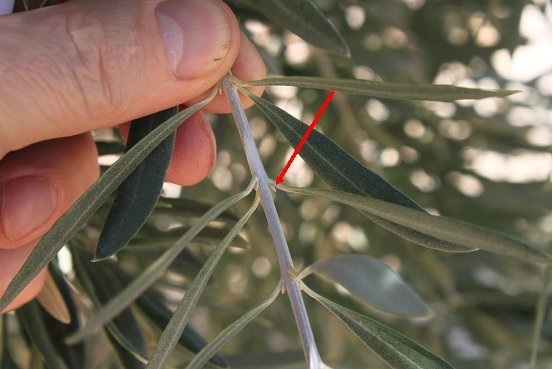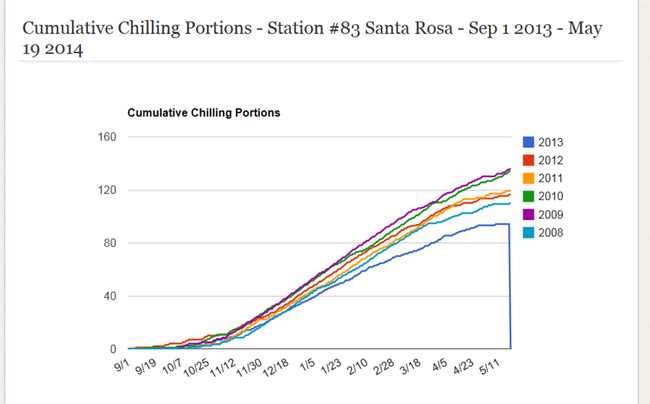Click on photos to see details.
Some varieties of olives that need more chilling have only vegetative buds instead of flowers (photo Paul Vossen)
The number of chilling hours (below 45oF) required by fruit trees varies from about 100 for figs to over 1,000 for apples. It also varies by variety within each species. It is even more complicated than that. Using the old system of measurement, which just adds up the number of hours of temperatures below 45oF (November 2013 through February 2014) we had 1,339 hours in Santa Rosa. This is slightly above normal, as the historical average is about 1,200 per year with a range of 950 to 2,012 hours. Consequently, we would not expect to have seen any abnormal growth this spring, but we did. This occurred because not all chilling hours are equally effective and because chilling hours accumulated at night can be cancelled by warm daytime temperatures.
Bartlett pear flowering early on the cooler north side of the tree and later on the warmer south side (Photo Alberto Ramos)
Paul Vossen, Specialty Crops Advisor pmvossen@ucanr.edu
Available as PDF Low Chilling in 2014 Causes Fruit Tree Problems


